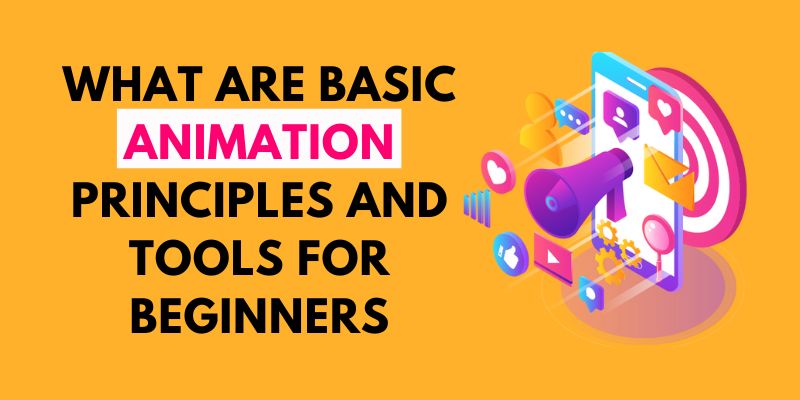
Animation is modifying a series of photographs to create the illusion of a moving image. Traditional animators worked with two-dimensional drawings, while modern computer technology allows animators to work with computer-generated graphics. This technology includes various animation tools to help animators work faster or achieve certain visual effects. To learn more about 2D & 3D Animation development, join the Animation Institute in Chennai at FITA Academy, which will provide you with a diverse skill set and the best Placement Training.
In this blog, I’ll explain What are Basic Animation Principles and Tools for Beginners.
What are Animation Tools?
Modern animation tools are computer software programmes that can assist an artist in creating animated visuals on the screen. Some tools may have simple functions suitable for novices, but others may include sophisticated processes suitable for experienced animators. You can also find animation tools to help you achieve specific animation styles.
Principles of Animation
To make an excellent animation, every animator should first follow these guidelines. These concepts emerged from previous animation techniques but are also beneficial and necessary for performing animation.
Squash and Stretch
This is the most important principle of animation; it gives an item a sensation of weight and volume.
Anticipation
In this principle, the animator will construct a beginning scenario that shows something will happen, but almost nothing happens unexpectedly.
Staging
The animator produces scenes that appeal to the audience, directing their attention to that scene.
Flow through and overlapping action
Two objects acting at different speeds in any scene easily describe this principle.
Slow in and Slow out
This concept is exhibited when a thing has maximum acceleration in between and resists at the beginning and end.
Arc
Arcs are included in practically all animation since no object will act in a straight path and instead follow some arc.
Enroll in the Film Editing Courses in Chennai, Which will provide you with more Concepts about Film Editing Techniques.
Animation tools
Here are some tools that animators might utilise in their careers, along with their uses and benefits:
Adobe Character Animator
This desktop animation software allows artists to import an animation-ready character, or “puppet.” Using the artist’s camera and microphone, the software records the artist’s words and facial emotions, which it then superimposes on the puppet. Motion capture animation is a technique that allows artists to animate in real time while moving and speaking. This can help with efficiency.
OpenToonz
OpenToonz is a free 2D animation software that can be used for business and non-commercial applications. Because this is an open-source application, anyone can modify the source code to improve their experience.
Piskel
This online tool allows animators to build 2D graphics out of low-resolution pixels. This can produce animated figures that resemble those in classic pixilated video games. Artists can use the Piskel technology to modify their frame rate to produce live previews of their work. You may use this software online or on your PC to export animated GIFs and full-length projects. Piskel, like OpenToonz, uses open-source code.
Spine
The spine is a game animation tool in 2D. You can use this software to import drawings and animate them using a variety of specialised capabilities. These capabilities include texture packers and free-form deformation tools, which allow you to change the shape of an image.
Pencil2D
This free, open-source application is ideal for animators who want to create 2D hand-drawn projects. It employs simple technical processes that allow artists to concentrate on the hand-drawn components of their work. It works across several platforms and provides artists with various virtual drawing tools like pencils, ink, and paint.
Maya
Autodesk’s Maya programme is a professional 3D animation tool for making realistic visuals. Animators may use this technique to create very realistic animated productions or to complement live-action films with realistic characters and details that would otherwise be difficult to capture on film. This tool can also aid animators in creating realistic virtual visual effects such as explosions and water.
Conclusion
Hopefully, you enjoyed this blog and now understand everything about 2D & 3D Animation, including What are Basic Animation Principles and Tools for Beginners.
You can gain more expertise and ability in designing dynamic and interactive web applications by studying at the Best VFX Institute in Chennai at FITA Academy.
Read more: UI UX Designer Interview Questions and Answers